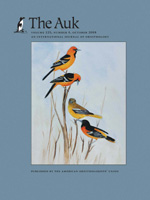African populations of the Village Weaver (Ploceus cucullatus) are subject to brood parasitism by the egg-mimicking Diederik Cuckoo (Chrysococcyx caprius), which has resulted in high variation in egg color between individuals. Considering the nesting environment of the Village Weaver and the putative pre-parasitism ancestral egg color, I hypothesize that blue-green pigment may protect Village Weaver embryos from solar radiation. On this basis, more intense (more chromatic) blue-green egg colors may have evolved by natural selection in Village Weavers in the absence of Diederik Cuckoos. Moreover, even in African populations that are parasitized, Village Weaver eggs may have diverged in accordance with nesting light environments. In accordance with the proposed hypothesis, over the past two centuries two introduced populations have evolved more intense blue-green egg colors compared with their source populations. Two African source populations also differ from each other in the predicted direction, the population with the sunnier nesting climate having more intensely blue-green eggs. These results suggest that upon relaxation of brood parasitism by an egg mimic, Village Weaver eggs may adapt to solar radiation.
How to translate text using browser tools
1 October 2008
Population Differentiation and Rapid Evolution of Egg Color in Accordance with Solar Radiation
David C. Lahti
ACCESS THE FULL ARTICLE

The Auk
Vol. 125 • No. 4
October 2008
Vol. 125 • No. 4
October 2008
bird eggs
egg color
introduced species
Ploceus cucullatus
rapid evolution
relaxed selection
solar radiation




